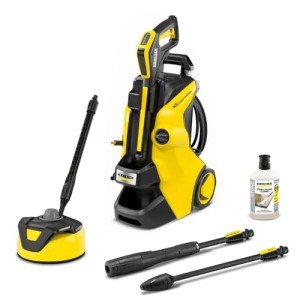The Comprehensive Guide to Power Tools: Understanding Their Types, Uses, and Maintenance
Power tools are important in the contemporary workshop, making it possible for jobs that would otherwise be tiresome and lengthy when performed with hand tools. Ranging from fundamental drills to complex woodworking makers, power tools offer performance and precision that can dramatically alter the way professionals and enthusiasts approach their tasks. This short article explores the various types of power tools, their applications, maintenance ideas, and often asked concerns.
Types of Power Tools
Power tools are generally categorized into two primary groups: cordless and corded. Each type has its benefits and ideal usages.
1. Cordless Power Tools
Cordless tools run on rechargeable batteries, offering greater mobility and ease of use. Some common types consist of:
- Cordless Drill/Driver: Essential for drilling holes and driving screws, a cordless drill is an essential in any toolbox.
- Cordless Circular Saw: Ideal for cutting lumber and other materials, particularly when portability is needed.
- Cordless Jigsaw: Useful for making detailed cuts and curves in different products.
- Cordless Impact Driver: Perfect for driving long screws and fasteners into difficult products quickly.
2. Corded Power Tools
While corded tools may be less portable, they generally offer more power and are frequently utilized for heavier-duty jobs. Secret examples consist of:
- Table Saw: A stationary tool that offers accuracy cutting for woodworking projects.
- Miter Saw: Used for making precise crosscuts and miters in a workpiece.
- Angle Grinder: Useful for cutting or grinding metal and concrete.
- Drill Press: A fixed drill that permits achieving greater accuracy in drilling holes.
Contrast Table of Cordless and Corded Power Tools
| Feature | Cordless Power Tools | Corded Power Tools |
|---|---|---|
| Movement | High | Restricted by power cable |
| Power | Less effective | More effective |
| Weight | Lighter due to absence of cable | Heavier due to motor and cable |
| Battery Life | Restricted by battery life | Constant power supply |
| Cost | Typically more costly | Typically more budget friendly |
Applications of Power Tools
Power tools are utilized across various markets and activities. Understanding the best tool for the task can enhance effectiveness and outcomes. Some common applications include:
- Construction Projects: Drills, saws, and nailers dominate job sites for framing and roofing.
- Woodworking: Routers, sanders, and jointers assist in developing detailed and polished wooden pieces.
- Automotive Repair: Impact wrenches and air compressors are crucial for dealing with lorries.
- Home Improvement: DIY lovers make use of various tools for restorations, repair work, and landscaping tasks.
Popular Power Tools and Their Uses
Here are some frequently used power tools in addition to their primary applications:
Power Drill:
- Used for drilling holes and fastening screws.
- Is available in numerous sizes for various applications.
Reciprocating Saw:
- Ideal for demolition work and cutting through products like wood, metal, and drywall.
Sander:
- Used for smoothing surfaces, readily available in different types such as orbital and belt sanders.
Router:
- Employed in woodworking for burrowing an area in a piece of wood.
Nail Gun:
- A quick and effective tool for driving nails into wood and other products.
Maintenance Tips for Power Tools
Keeping power tools in optimum condition is important for security and performance. Here are some maintenance ideas:
- Regular Cleaning: Dust and particles can build up in power tools. Routine cleansing helps maintain efficiency and extends tool life.
- Check Connections and Cords: Regularly look for fraying or damage to cables and connections. Replace any broken parts right away to prevent accidents.
- Sharpen Blades and Bits: Dull blades can decrease efficiency and precision. Routine sharpening guarantees clean cuts and faster operation.
- Lubrication: Certain tools need routine lubrication. Seek advice from the user handbook for specific suggestions.
- Storage: Store tools in a dry environment and in their cases if offered. powertoolsonline.uk from wetness and unintentional damage.
Frequently Asked Questions (FAQs)
1. What safety gear should be worn when utilizing power tools?
- It is important to wear appropriate safety equipment such as shatterproof glass, hearing defense, gloves, and a dust mask depending on the tool in usage.
2. How do I choose the best power tool for a project?
- Consider the particular tasks you need to achieve, the material you'll be dealing with, and the tool's power capacity. Researching tools suited for those tasks will aid in making the best choice.
3. Are cordless tools as excellent as corded tools?
- Cordless tools offer benefit and mobility, while corded tools offer more power for heavier jobs. Pick based on your particular requirements.
4. How frequently should power tools be preserved?
- Regular maintenance should be carried out routinely, preferably after every usage. Comprehensive inspections and servicing ought to be done a minimum of as soon as a year.
5. What is the life-span of a normal power tool?
- The life-span of power tools differs commonly depending upon use and quality however typically varies from 5 to 15 years.
Power tools are important assets for both specialists and DIY enthusiasts, providing efficiency and precision unlike any hand tool. Comprehending the various types, applications, and upkeep procedures is vital for optimizing their potential and guaranteeing security. With correct care and knowledge, these tools can serve users effectively for several years, ultimately boosting efficiency and job results. By investing in quality tools and sticking to upkeep routines, one can make the most out of every job, regardless of size or complexity.

